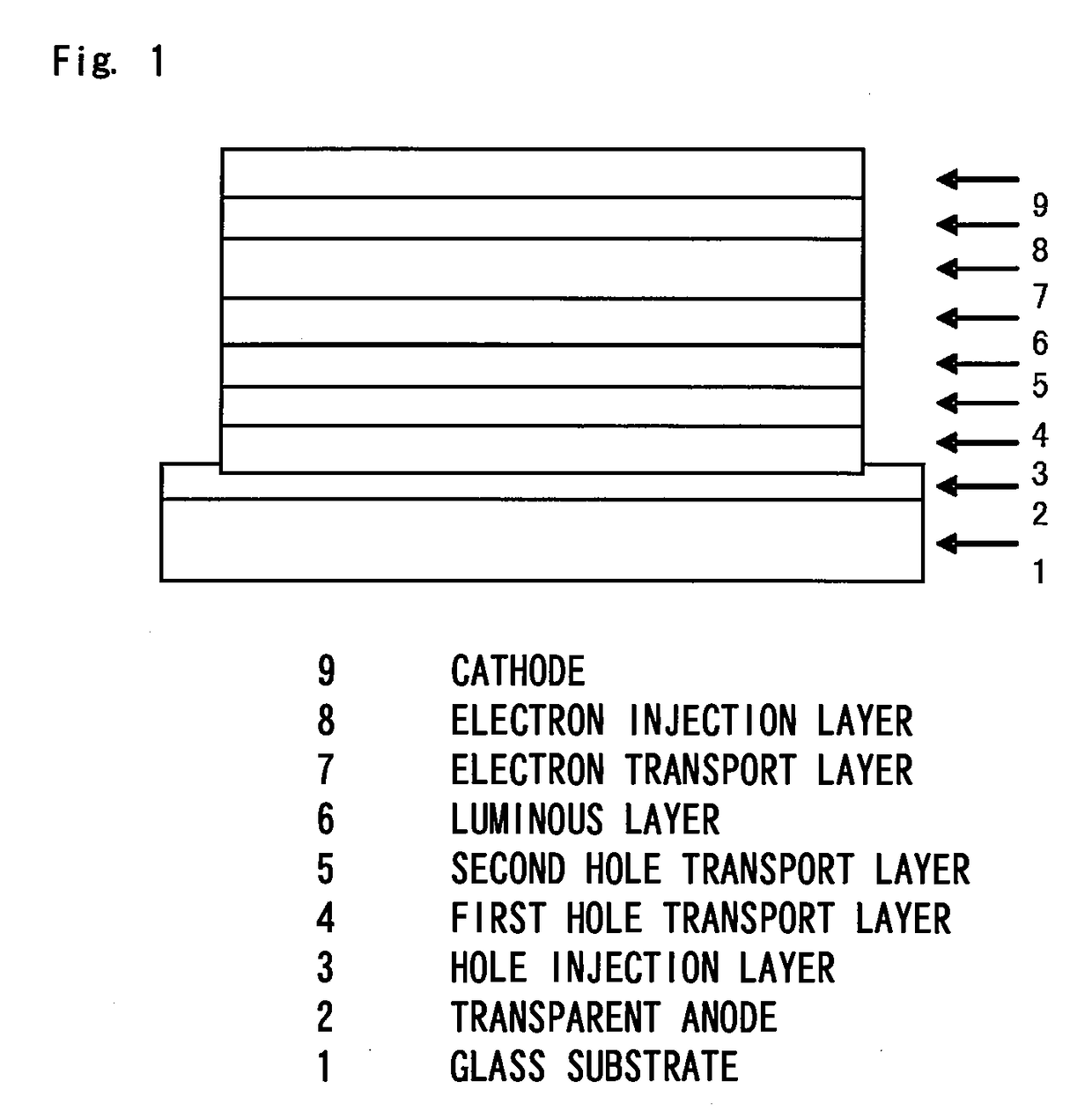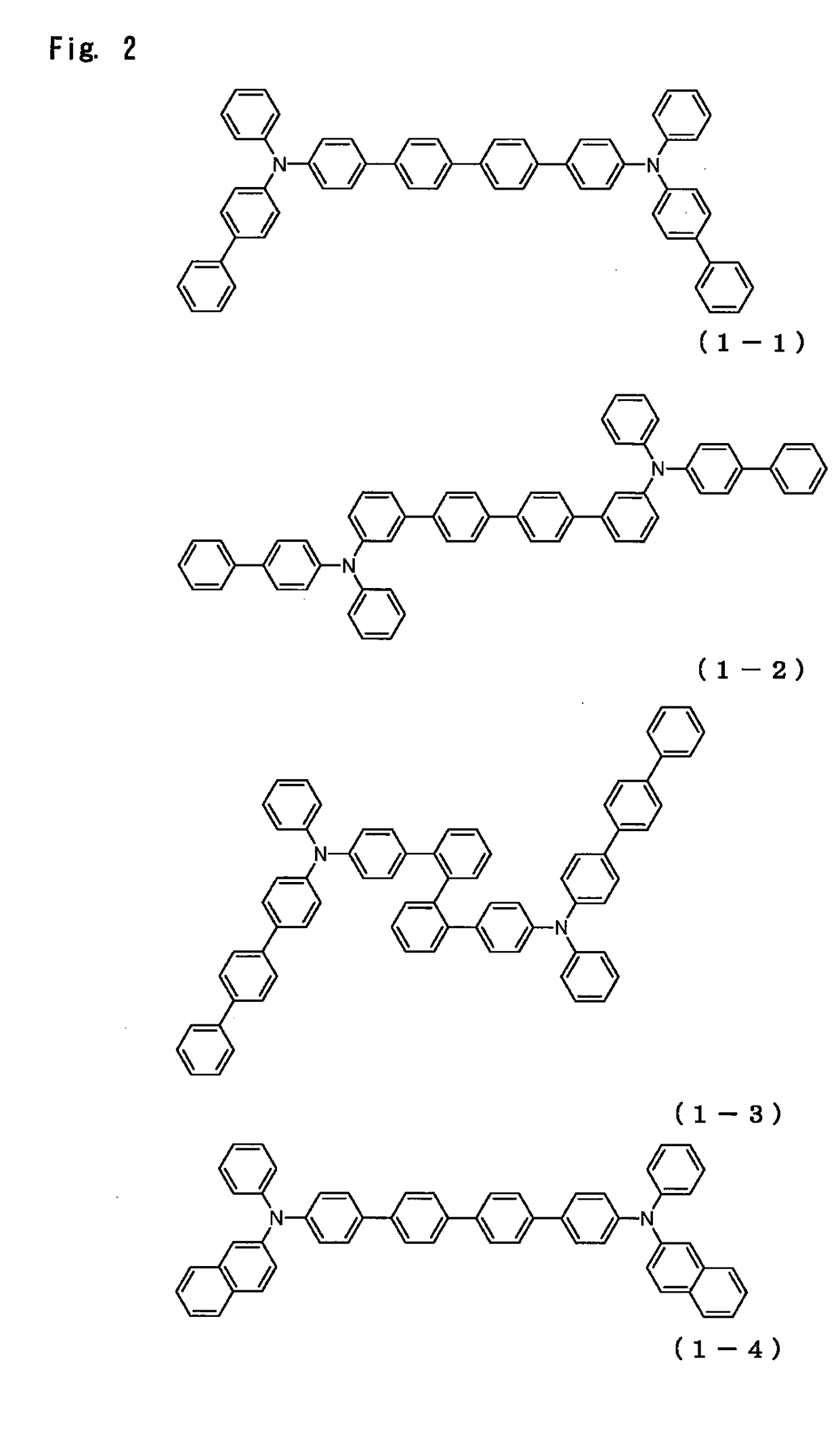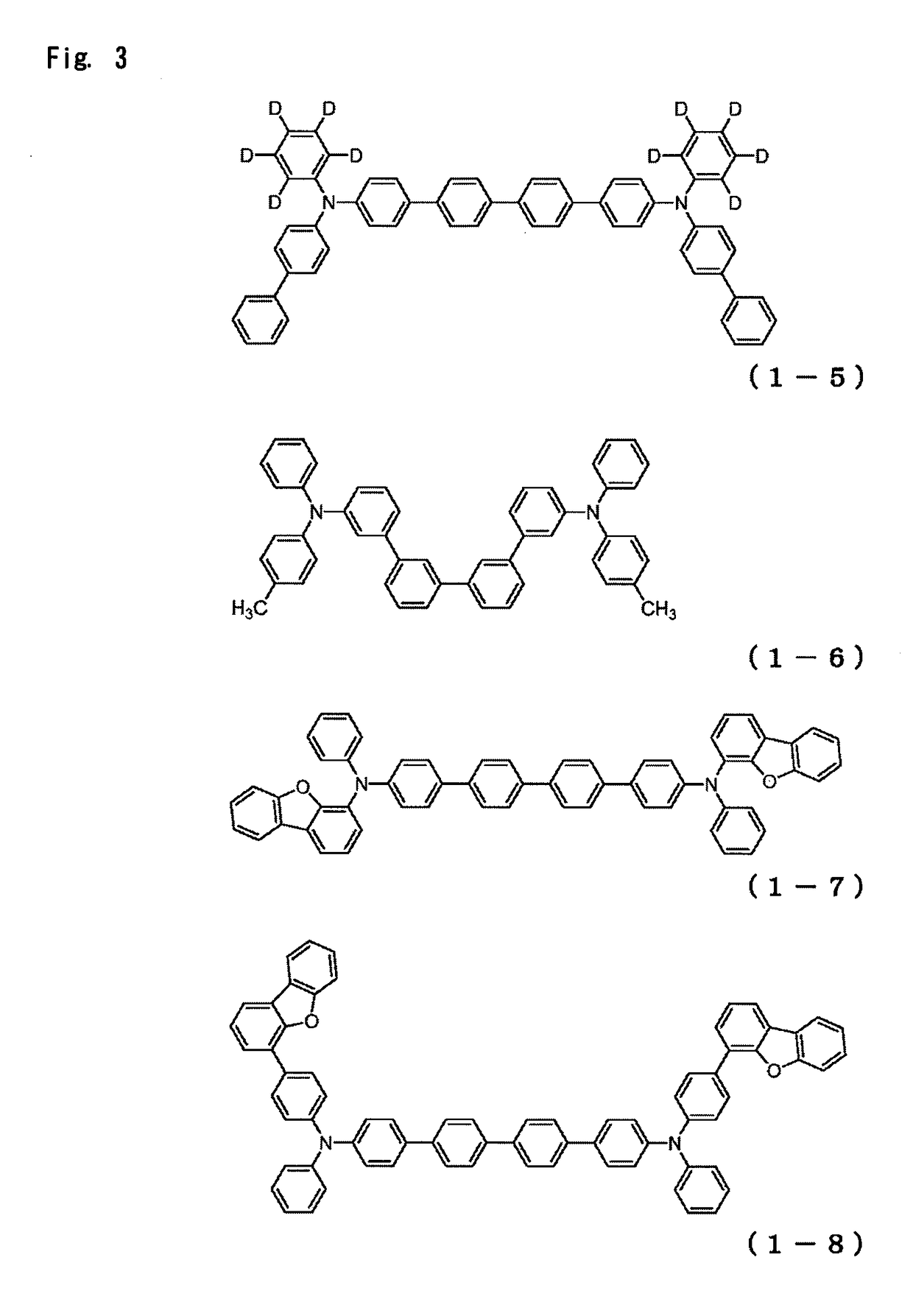Organic electroluminescence device
a technology of electroluminescence device and organic material, which is applied in the direction of luminescent composition, organic chemistry, chemistry apparatus and processes, etc., can solve the problems of material deterioration, low heat resistance, and confinement of excitons generated in the luminous layer, and achieves satisfactory efficiency, high efficiency, and effective injection and transport
- Summary
- Abstract
- Description
- Claims
- Application Information
AI Technical Summary
Benefits of technology
Problems solved by technology
Method used
Image
Examples
synthesis example 1
Synthesis of 4,4′″-bis{(biphenyl-4-yl)-phenylamino}-(1,1′:4′,1″:4″,1′″-quaterphenyl)
[0317]
a nitrogen-purged reaction vessel was charged with18.2 g,N-phenyl-N-{4-(4,4,5,5-tetramethyl-1,3,2-dioxaborolan-2-yl)phenyl}-(1,1′-biphenyl-4-yl)amine4,4′-diiodobiphenyl 7.5 g,2M aqueous solution of potassium carbonate 46 mL,toluene 60 mL,andethanol 15 mL,
and a nitrogen gas was passed therethrough for 1 h. Then, 1.1 g of tetrakis(triphenylphosphine)palladium was added, followed by heating, and stirring was performed for 10 h at 72° C. A total of 60 mL of methanol was added after cooling to room temperature. The precipitated solids were collected by filtration and washed with 100 mL of a mixed solution of methanol / water (5 / 1, v / v). Then, 100 mL of 1,2-dichlorobenzene was added and dissolution was performed under heating. The removal of insolubles by filtration was followed by gradual cooling and addition of 200 mL of methanol. The precipitated crude product was collected by filtration. The cru...
synthesis example 2
Synthesis of 4,4″″-bis{(biphenyl-4-yl)-phenylamino}-(1,1′:4′,1″:4″,1′″:4′″,1″″-kinkphenyl)
[0325]
a nitrogen-purged reaction vessel was charged with16.3 g,N-phenyl-N-{4-(4,4,5,5-tetramethyl-1,3,2-dioxaborolan-2-yl)phenyl}-(1,1′-biphenyl-4-yl)amine4,4′-diiodoterphenyl 8.0 g,2M aqueous solution of potassium carbonate 41 mL,toluene 64 mL,andethanol 16 mL,
and a nitrogen gas was passed therethrough for 1 h. Then, 1.0 g of tetrakis(triphenylphosphine)palladium was added, followed by heating, and stirring was performed for 18 h at 72° C. A total of 60 mL of methanol was added after cooling to room temperature. The precipitated solids were collected by filtration and washed with 100 mL of a mixed solution of methanol / water (5 / 1, v / v). Then, 100 mL of 1,2-dichlorobenzene was added and dissolution was performed under heating. The removal of insolubles by filtration was followed by gradual cooling and addition of 200 mL of methanol. The precipitated crude product was collected by filtration. ...
synthesis example 3
Synthesis of 4,4′″-bis{(biphenyl-4-yl)-phenylamino}-(1,1′:3′,1″:3″,1′″-quaterphenyl)
[0333]the reaction was performed under the same conditions as in Synthesis Example 1, except that[0334]3,3′-dibromobiphenyl
was used instead of[0335]4,4′-diiodobiphenyl.
As a result, 16.2 g (yield 91%) of a light yellow powder of 4,4′″-bis{(biphenyl-4-yl)-phenylamino}-(1,1′:3′,1″:3″,1′″-quaterphenyl) (Compound 1-11) was obtained.
[0336]The structure of the resulting light yellow powder was identified using NMR. In 1H-NMR (CDCl3), the following signals of 44 hydrogens were detected.
[0337]δ (ppm)=7.87 (2H)[0338]7.48-7.66 (18H)[0339]7.39-7.48 (4H)[0340]7.29-7.39 (6H)[0341]7.18-7.26 (12H)[0342]7.08 (2H)
PUM
| Property | Measurement | Unit |
|---|---|---|
| Electric potential / voltage | aaaaa | aaaaa |
| Efficiency | aaaaa | aaaaa |
| Transport properties | aaaaa | aaaaa |
Abstract
Description
Claims
Application Information
 Login to View More
Login to View More - R&D
- Intellectual Property
- Life Sciences
- Materials
- Tech Scout
- Unparalleled Data Quality
- Higher Quality Content
- 60% Fewer Hallucinations
Browse by: Latest US Patents, China's latest patents, Technical Efficacy Thesaurus, Application Domain, Technology Topic, Popular Technical Reports.
© 2025 PatSnap. All rights reserved.Legal|Privacy policy|Modern Slavery Act Transparency Statement|Sitemap|About US| Contact US: help@patsnap.com



